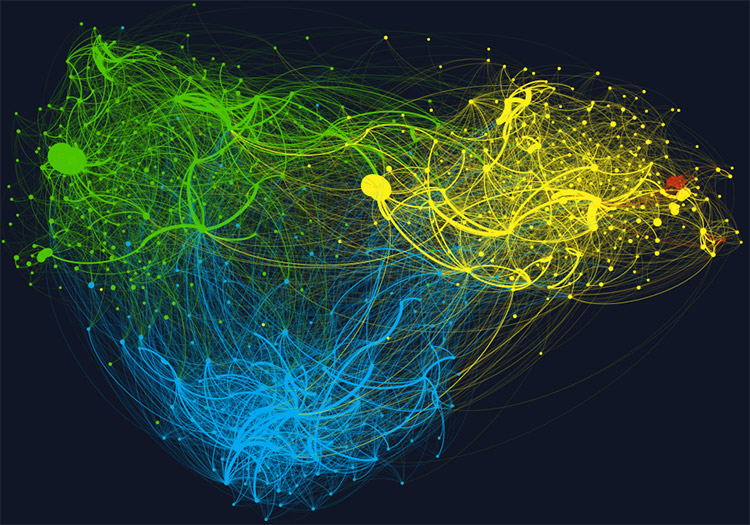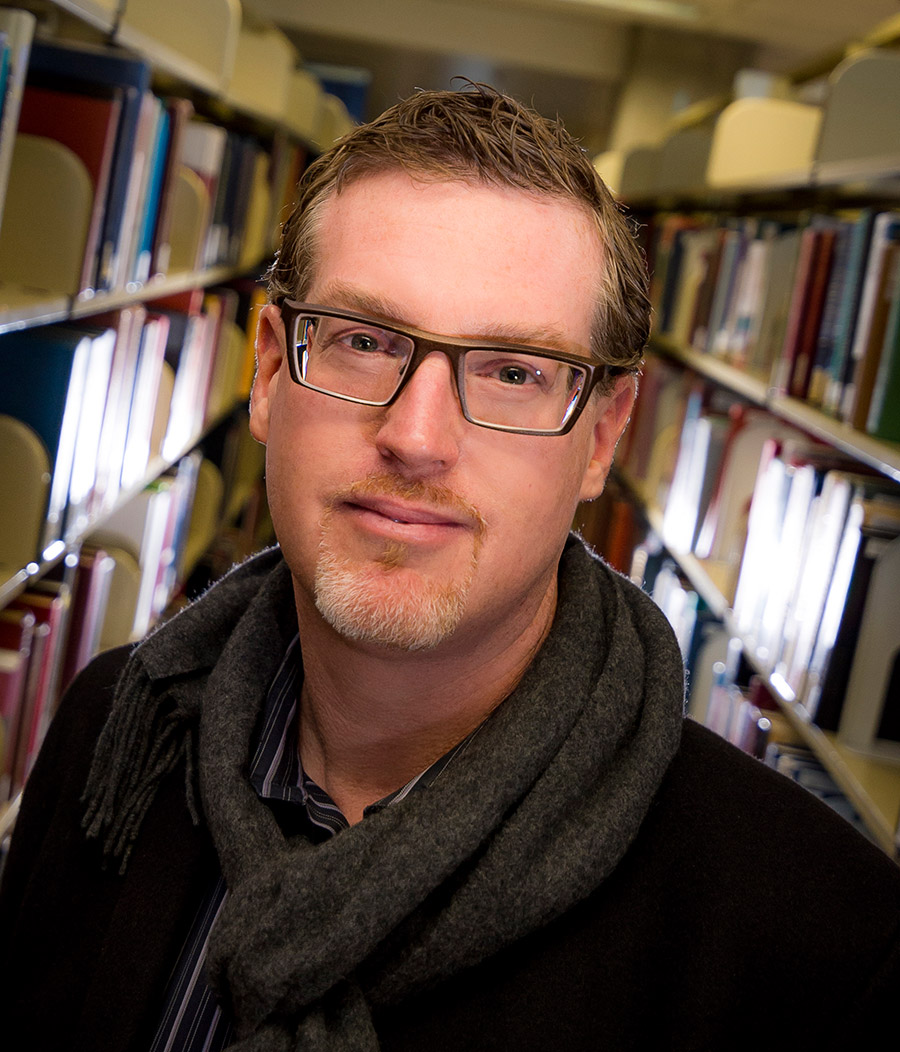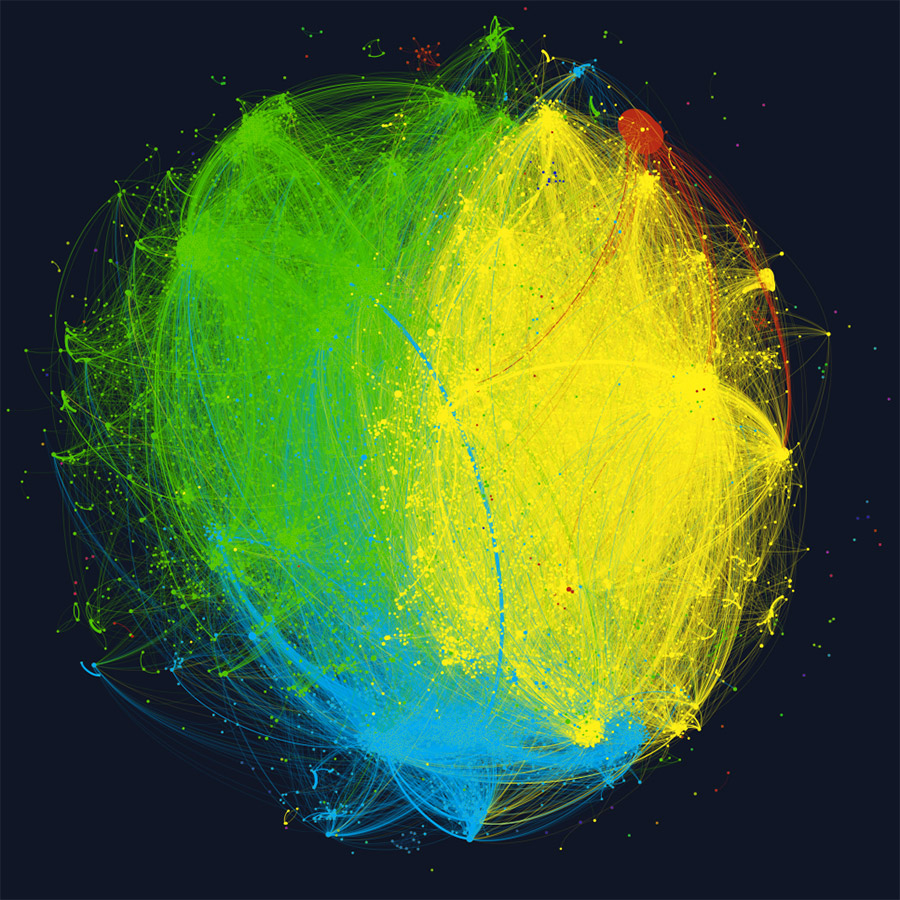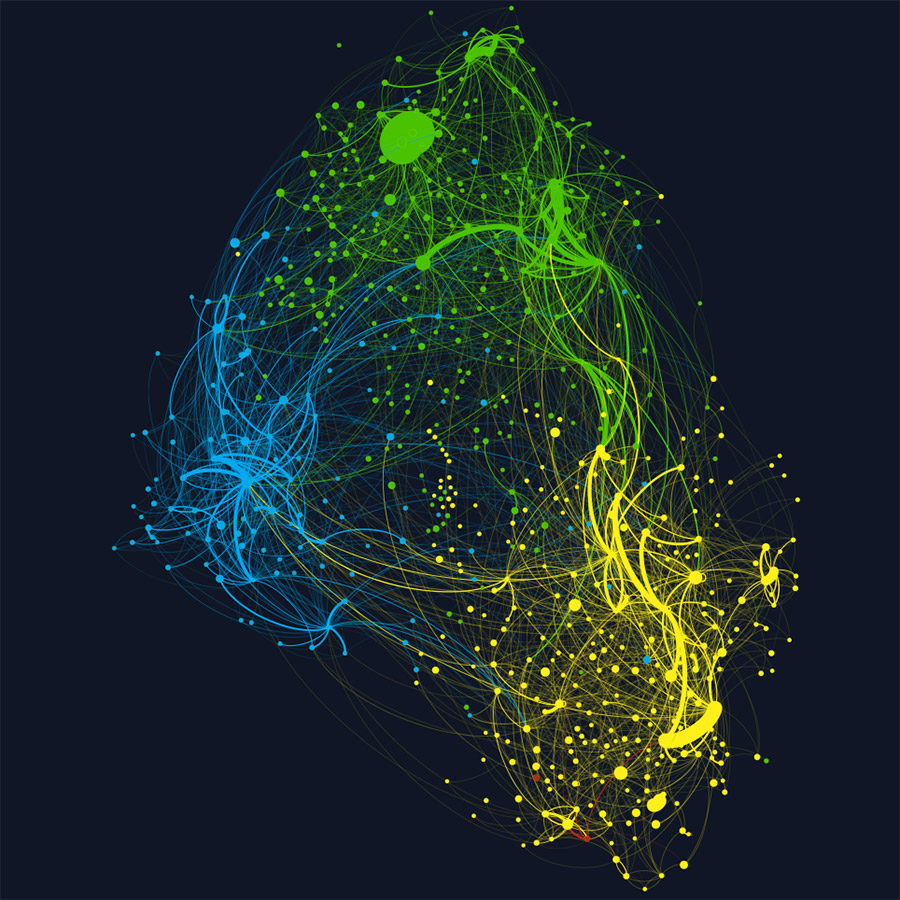
By:
- Inga Kiderra
Published Date
By:
- Inga Kiderra
Share This:

Alan Daly analyzes social networks, both the digital kind in cyberspace and IRL ones in the schoolhouse, to help improve education.
Network News: Relationships Are Vital to School Reform
Alan Daly explores ecosystems. He also parses networks. But the former schoolteacher and school psychologist is neither a biologist nor a computer scientist. Daly is chair of education studies in the UC San Diego Division of Social Sciences who believes that the only way to improve schools is to understand the environment in which we’re trying to effect change.
To that end, Daly studies social networks in education. In his most recent research, Daly also examines the political climate in which schools are immersed. Together with colleagues from the University of Pennsylvania and UNED in Madrid, Spain, Daly analyzed how the national conversation about the Common Core State Standards has played out on Twitter.

Alan Daly. Photo by Erik Jepsen/UC San Diego Publications
Twitter interested the team because it is a public network – a forum widely used both by members of the general population and the news media. And Common Core, the researchers point out, is the first major U.S. educational policy change to take place during the era of omnipresent internet and social media. (Consider that the last such initiative, No Child Left Behind, was enacted only three years after Google was even founded and three years before the launch of Facebook.)
“Is Twitter affecting the national debate about Common Core?” Daly and colleagues wondered. “Is it affecting policy?” In a word, yes.
The team tracked and analyzed about 190,000 tweets containing the hashtag #commoncore, written by about 53,000 different people from September 2013 to February 2014, a time when the debate about the Common Core educational standards entered the mainstream and began showing up in political campaigns. The team explored the informal networks people form on Twitter and the dynamics of the debate. In addition to publishing traditional academic papers, they also outline their findings in an interactive website meant to appeal to a broad audience: hashtagcommoncore.com.
Fired off 140 characters at a time, the Twitter fight over Common Core is being driven by a small number of influencers, the researchers find. Many of these are not educators or policymakers or others who might have dominated the conversation even a decade ago. And many don’t even make the most provocative statements; rather, they are connected and prolific spreaders of others’ posts – re-tweeters.
“It also seems that the debate about the standards is often not about the standards themselves at all,” Daly said, “but a proxy war for other issues: opposition to a federal role in education, for example.”
The researchers are beginning to unravel Twitter data for March through November 2014. Preliminary analysis suggests that the number of actors using #commoncore is growing, more institutional and organizational actors seem to be entering the fray, and the Twitter networks continue to evolve.
“We’re seeing some odd bedfellows in this fight, from both left and right,” Daly said.

Social network analysis reveals who’s connected to whom and who’s influential.
While Daly has been begun to delve into digital networks in cyberspace, for much of his career he has also been studying real-life networks in the schoolhouse. “Relationships,” he says unequivocally, “are vital to school reform.”
Daly – the first person in his family to go to college and the author/editor of the book “Social Network Theory and Educational Change” – traces his belief in the power of relationships to an early experience: College wasn’t on the horizon for him, he says, until a college-educated man he was gardening for saw something in him and encouraged him to pursue school beyond high school.
“The idea of mentorship and relationships is central to me – and deeply important,” said Daly. “In education, we focus on human capital. We figure what’s needed is more experience and more training for teachers and administrators. But we forget the social capital, the connections between people. You need both types of capital to improve outcomes. The relationships that we have – they have value.”
After college, Daly embarked on a 16-year career in public schools: He taught in Riverside, then served as a school psychologist in Oceanside and, later, as a site administrator in Oxnard. He worked primarily, he says, in traditionally marginalized communities, with second language learners and children from lower socioeconomic backgrounds. “Some of the schools were not only disadvantaged,” Daly said, “but also intense, and even violent places, making the work of education even more important.
“At some point I realized I really wanted to change the system. The system in which I was working wasn’t serving the kids or communities I cared about. Education could be a great equalizer but it wasn’t.”
Daly was in Oxnard when he decided that to expand his efforts at making a difference in K-12 education he needed to be in higher education. He continued to work full time while earning his Ph.D. at UC Santa Barbara and completing his dissertation on trust and leadership.
Daly joined UC San Diego as an assistant professor in 2006. A full professor now, he was named chair of the department of education studies in 2013.
“Kids are not the problem. Educators are the not the problem, and communities are not the problem,” Daly said. “What is the problem is that we typically don’t approach solutions from a systems standpoint. We focus on one element to the detriment of the others.” What his social-network analysis of K-12 education is showing him is that the quantity and quality of relationships, whether relationships are based in trust and respect – in a school, in a district, among the teachers and leaders and to the wider community – seem to make a difference in whether the system is open to change or closes down.
“A powerful ecosystem surrounds kids and teachers in school,” he said. “Individuals reside inside this ecosystem of relationships and interactions – that either support or constrain them. Empowered with that knowledge, we can work collectively to change outcomes.”
Daly is currently working with the Vista Unified School District and its superintendent on how information about the Common Core and the district’s blueprint for success is taking hold throughout the district. He is drawing up network maps by asking relationally-based questions and investigating perceptions of trust, engagement and learning.: Who do you turn to for expertise on the Common Core? Who is an innovator in your school? Who has close relationships?

If social-network connections in a group are sparse or weak, information doesn’t travel as readily and change is harder to effect.
“Better understanding if there are many central actors at a site or many individuals who are really isolated can be quite instructive,” Daly said. “But what I don’t do is tell schools what to do. I approach the network maps I make as a learning opportunity for the school or district. I explain how to read the data and then encourage a school to own it and craft their own solutions. It’s less about me and more about the data being part of the system.”
Daly reminds schools and their leaders that “knowledge can reside and exist in multiple places” and that “people learn deeply when we can co-construct, co-design and co-learn within a system based in trust.”
He is planning to expand his social-network studies of schools to include other members of a school’s community. The son and grandson of “lunch ladies,” Daly knows well that all the people who make up a school are vital, “as the work of change is difficult and complex.”
In the meantime, since becoming chair of education studies, he has transformed the faculty meeting into an all-hands departmental one. “We need to ensure people are connected in and that everyone has a voice,” he said. “We have to build opportunities to engage and interact – in schools and at ‘home.’”
Share This:
You May Also Like
Stay in the Know
Keep up with all the latest from UC San Diego. Subscribe to the newsletter today.


